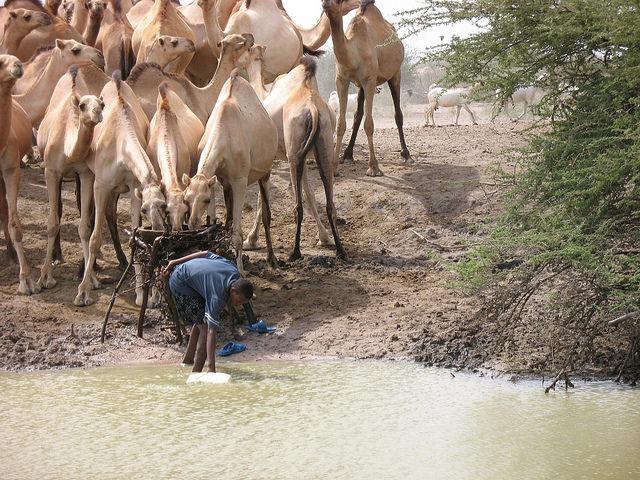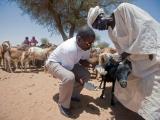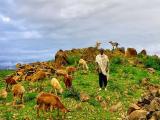A Rift Valley fever outbreak in Kenya has sickened 10 people, 5 of them fatally, the World Health Organization (WHO) regional office for Africa said in its latest weekly health emergencies report.
The disease primarily strikes livestock by the mosquito-borne route. Though humans can be infected by mosquitoes, the virus is more commonly passed by contact with blood or organs of infected animals or drinking milk from sick ones. The disease is usually mild, but some patients experience a severe form.
Index case linked to sick camel
The country's government reported the outbreak, located in Wajir County in the northeast, to the WHO on Jun 8. It began on Jun 2 when an 18-year-old man who is thought to be the index case-patient was seen at a local health facility with a 5-day history of fever, weakness, bleeding, and other symptoms. He died the day he was hospitalized, and an investigation found he had reportedly eaten meat from a sick camel toward the end of May.
Two days after the man was hospitalized, two of his relatives were hospitalized with similar symptoms, including a 25-year-old man who died on the day he was admitted.
Blood samples from the two patients were tested at the Kenya Medical Research Institute (KEMRI), where one of the samples was positive for Rift Valley fever.
As of Jun 8, 10 suspected cases have been reported, including 5 deaths. Three people have recovered and been discharged from hospitals, and one patient is still hospitalized. Testing on eight samples is under way at KEMRI, according to the WHO.
Outbreak reported in camels, goats
Kenya's livestock ministry has reported numerous deaths and spontaneous abortions in animals, especially camels and goats, in four counties over the last 2 months, including areas that border Tanzania, Ethiopia, and Somalia.
On Jun 8 the ministry also reported a suspected Rift Valley fever outbreak in camels to the World Organization for Animal Health (OIE). The event began on Jun 3 in Wajir County, killing 17 of 250 camels. It occurred in an area that had experienced flooding after heavy rainfall.
Response actions underway
The WHO said Kenyan government officials had an emergency meeting on May 8, which included the WHO and its partners. So far, response steps include the deployment of a health and livestock ministry joint task force to Wajir County to assist with outbreak investigation and other actions.
Active surveillance for more human cases is underway, and a treatment center has been set up in Wajir's referral hospital. Also, the agriculture ministry has imposed a ban on slaughtering animals for public consumption.
The WHO said several factors in the outbreak pose a risk of further spread in the region, including the semi-nomadic population in Wajir County and close connections with other parts of Kenya, Ethiopia, and Somalia, as well as cattle holders in eastern Uganda and South Sudan. Also, livestock movements are high in the subregion, and cattle raiding takes place among Uganda, Kenya, and South Sudan. Ongoing rains and flooding have amplified vector density in the outbreak region, according to the WHO.
Earlier this year, a Rift Valley fever outbreak in South Sudan sickened at least 40 people.
See also:
Jun 11 WHO African regional office weekly health emergencies report
Jun 8 OIE report on Rift Valley fever in Kenyan camels
















